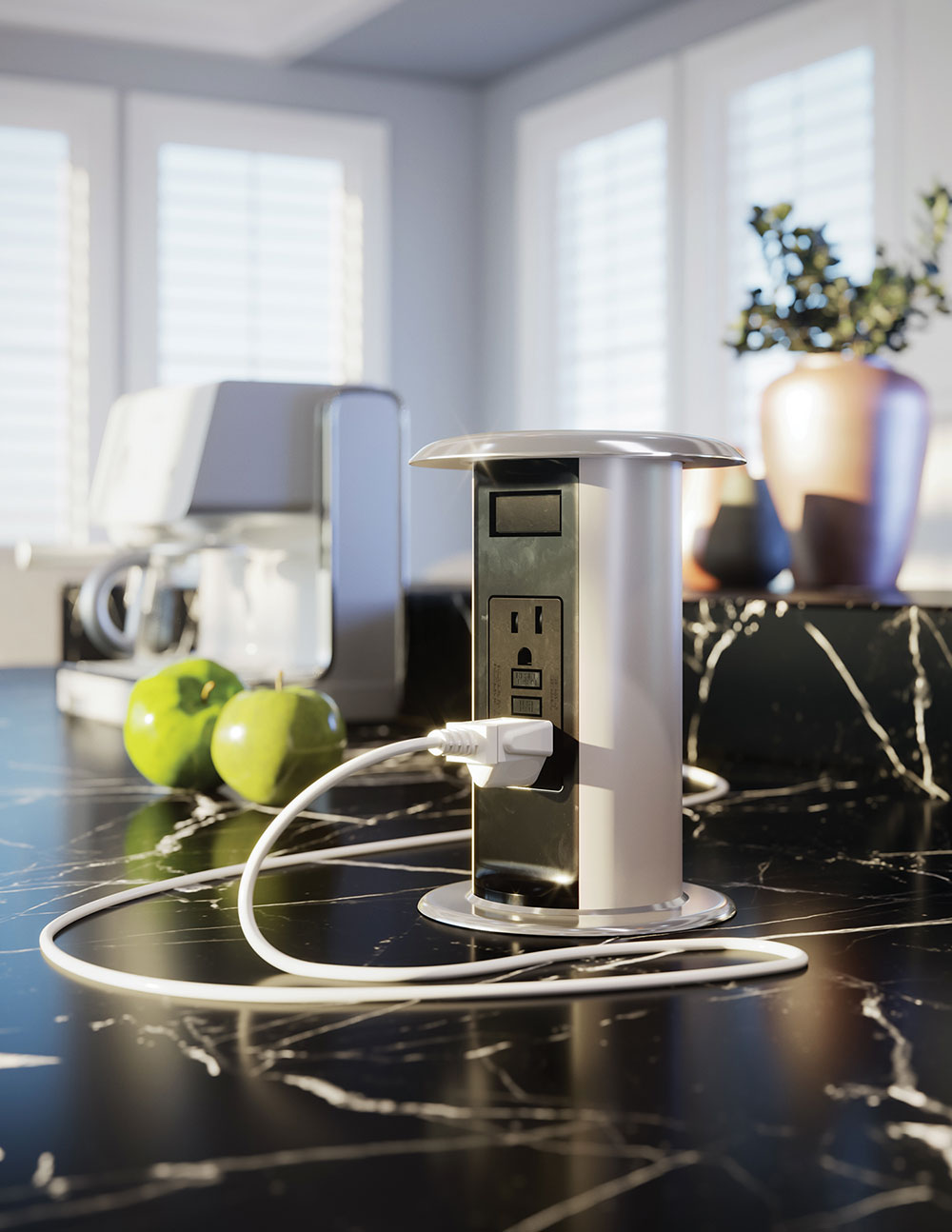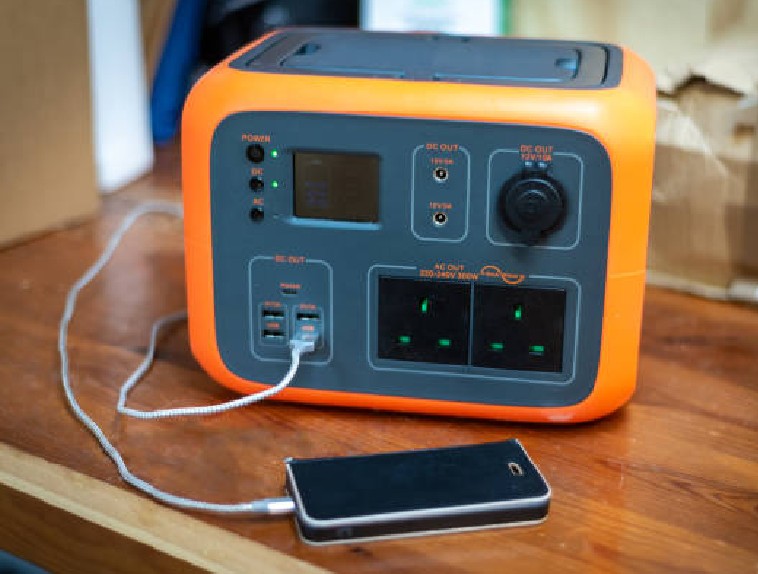Question
NEC® 406.5(E) addresses receptacle assemblies Listed for countertop applications. Does UL Certify (List) receptacles for use in kitchen countertops? Do the receptacles have to be hard wired or can they be cord and plug connected? What about work surface receptacles? What’s the difference?
Answer
Yes, UL does Certify (List) countertop receptacle assemblies. These are typically pop-up type receptacle assemblies specifically intended for use in kitchen and bathroom countertops. Hard-wired receptacle assemblies are Certified (Listed) for use in kitchen and bathroom countertops physically attached to the building structure under the product category Receptacles for Attachment Plugs and Plugs (RTRT). If provided with ground-fault circuit interrupter receptacles (GFCIs), they are Certified (Listed) under Ground-Fault Circuit Interrupters (KCXS). Cord and plug connected receptacle assemblies are Certified (Listed) for installation into portable kitchen or bathroom roll around type islands or stationary furniture countertops only, under the product category Furniture Power Distribution Units (IYNC). They are not intended for installation in countertops physically attached to the building structure.
The guide information and Certifications (Listings) for each product category can be viewed on UL Product iQ® at UL.com/piq; enter RTRT, KCXS or IYNC at the search field. Below we will address all three types.
Hard-wired receptacle assemblies intended for installation in a kitchen or bathroom countertop are investigated for compliance with the requirements in ANSI/UL 498, Standard for Safety of Attachment Plugs and Receptacles. UL 498 identifies these receptacle assemblies as pop-up receptacle assemblies.
The guide information for RTRT details that a UL Certified (Listed) pop-up receptacle assembly consists of a retractable flush-mount receptacle, outlet box and flush device cover plate intended for fixed installation on a branch circuit. A pop-up receptacle assembly is suitable for installation in a kitchen or bathroom countertop. They are provided with one or more receptacle outlets. The outlets are retractable for storage below a counter surface. They are intended for installation in accordance with Section 406.5(E) of the National Electrical Code® NEC®.
In addition to the basic construction and performance requirements applicable to a receptacle, outlet box and flush device cover plate, a pop-up receptacle assembly is also subjected to mechanical endurance, mechanical loading, dielectric voltage withstand, temperature and spill testing. Pop-up receptacle assemblies are marked as being suitable for installation in a countertop or a similar work surface.
To simulate water spilling on a kitchen or bathroom countertop with a hard-wired receptacle assembly, the spill test is conducted with the assembly in the extended position with any cover opened to the most disadvantaged position. A container holding one-half gallon (64 oz.) of saline solution is tipped over with the spill directed toward the most disadvantageous area of an assembly. A dielectric withstand test is conducted immediately after the spill.
Hard-wired self-contained GFCI receptacle assemblies intended for installation in a kitchen or bathroom countertop are investigated for compliance with the requirements in ANSI/UL 943, Standard for Safety of Ground-Fault Circuit Interrupters. GFCIs for use in countertops undergo a similar test program to address countertop installation as hard-wired RTRT receptacles e.g. mechanical endurance, spill testing, leakage current and dielectric voltage withstand. The guide information for KCXS details that all self-contained GFCIs intended for installation in a counter are suitable for installation in a kitchen or bathroom countertop. They are provided with one or more receptacle outlets. The outlets may be fixed or retractable for storage below the counter surface.
Cord and plug connected receptacle assemblies identified and intended for use in a kitchen or bathroom countertop not physically attached to the building structure are Certified (Listed) under Furniture Power Distribution Units (IYNC) and are investigated for compliance with the requirements in ANSI/UL 962A, Standard for Safety of Furniture Power Distribution Units (FPDUs). FPDUs intended for use in a kitchen or bathroom countertop are subjected to mechanical endurance, leakage current, dielectric voltage withstand and spill testing.
The spill test is conducted with the assembly in the extended position, with any cover opened to the most disadvantaged position. Similar to the spill test for hard-wired assemblies, a container holding one-half gallon (64 oz.) of saline solution is tipped over with the spill directed toward the most disadvantageous area of the FPDU. Immediately following the spill, the leakage current and dielectric withstand tests are conducted.
The guide information for IYNC details that FPDUs for kitchen and bathroom countertops are indoor use only and are intended for connection to a permanently installed receptacle on a branch circuit rated 125 V AC and 20 amperes or less. These assemblies are intended for mounting to either portable or stationary furnishings only. The power supply connection is a cord and plug connected type, installed in accordance with NFPA 70®, National Electrical Code®.
A countertop mounted retractable FPDU assembly is marked as being suitable for installation in a kitchen or bathroom countertop surface or equivalent wording that must be visible during installation. This type of assembly is also marked: DANGER: Risk of electric shock. Unit shall be connected to a GFCI receptacle or connected to a GFCI branch circuit or equivalent.
FPDUs intended for installation in a work surface and not kitchen or bathroom countertop are subjected to a spill test that is the equivalent to a cup of coffee or a soft drink spilling on a desk. A container filled with eight fluid ounces of a saline solution is tipped over with the spill directed toward the most disadvantageous area of the assembly. Immediately following the spill, the dielectric withstand test is conducted.















Find Us on Socials